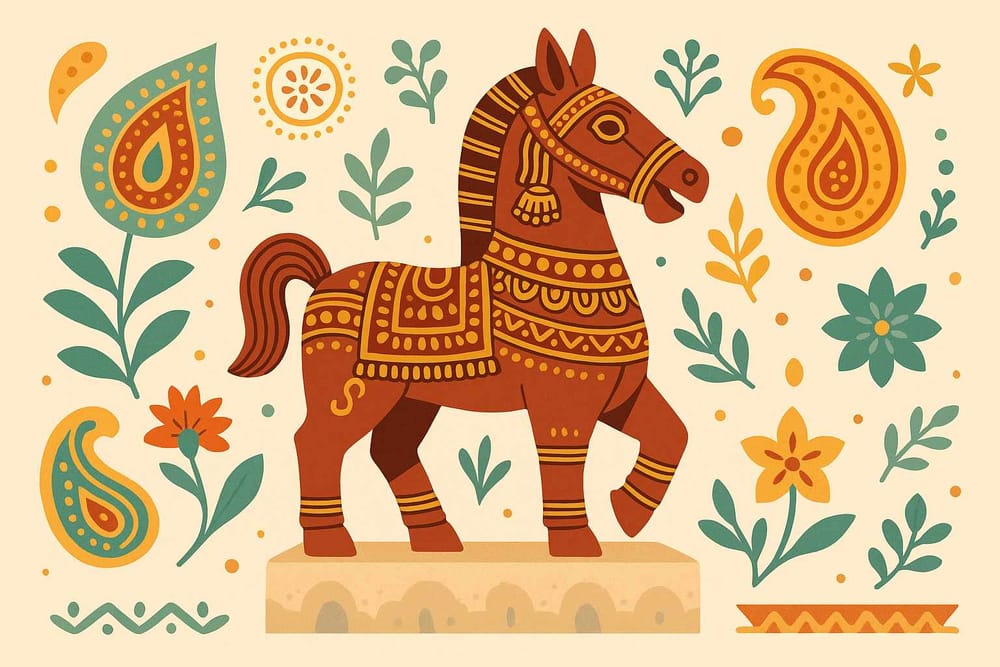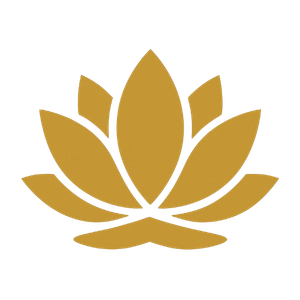
The Bankura Horse Symbolism: Explores Indian Art and Culture
Have you ever seen a piece of art that instantly feels like home? Something that speaks a language your heart understands, even if you’ve never heard it before? For me, and for millions of Indians, the Bankura Horse is that feeling, moulded from humble clay. Its strong, proud neck, erect ears, and silent, powerful stance are more than just a decorative figure; it’s a piece of our collective soul, a timeless echo from the soil of Bengal.
This iconic terracotta horse is not just an artefact you place on a shelf. It is a story of faith, a testament to incredible skill, and a powerful symbol of Indian art and culture that has journeyed from sacred village altars to homes across the globe. Let’s explore the beautiful journey of this terracotta icon.
From the Sacred Soil of Panchmura: The Origins of a Legend
The story of the Bankura Horse begins in the rustic heart of West Bengal, specifically in a village called Panchmura. For generations, the artisans here, known as *kumhars* (potters), have been breathing life into clay. Their craft isn't just a profession; it's a sacred inheritance, a tradition that connects them to the ancient civilizations of Mohenjo-Daro and Harappa, where terracotta art first flourished.
Originally, these magnificent horses were not made for decoration. They were created as humble, devotional offerings to the local deity, Dharmathakur (also known as Dharmaraj). Villagers would offer these horses as a symbol of sacrifice and devotion, praying for prosperity, strength, and protection. This deep spiritual root is what gives every Bankura Horse its profound character. In 2018, this unique craft was rightfully recognized with the Geographical Indication (GI) tag as "Bankura Panchmura Terracotta Craft," protecting its authenticity and honouring the artisans' legacy.
What a Bankura Horse Truly Represents in Our Culture
People often ask what the Bankura Horse symbolises. It’s not just one thing, but a beautiful blend of powerful ideas. Its strong, upright posture and elongated neck represent pride, courage, and resilience. In Bengal's agrarian society, a horse was a symbol of power and vitality, essential qualities for survival and prosperity. Offering a clay horse to a deity was a way of seeking these very blessings.
Beyond its physical strength, the horse acts as a spiritual vehicle, bridging the earthly and the divine. In many Indian traditions, horses are associated with sacred journeys and divine energy. The Bankura Horse carries this spiritual weight, making it a sacred presence in any space it occupies. It stands as a powerful reminder of our enduring traditions and the simple, profound faith of rural India.
This beautiful expression of regional artistry is a perfect example of India’s vibrant regional traditions and their deep spiritual roots.
The Making of a Masterpiece: A Labour of Pure Devotion
Creating a Bankura Horse is a meticulous process, a form of meditation in itself. It is traditionally made using terracotta clay sourced from local riverbeds and ponds. The process is a marvel of skill passed down through generations.
- Shaping the Form: The artisans don’t just mould a single piece of clay. A genuine Bankura horse is crafted in several parts—typically seven—including the four legs, the body, the long neck, and the face. Each part is shaped separately on the potter's wheel, requiring immense precision and a steady hand.
- The Art of Assembly: Once the parts are ready, they are carefully joined together. The artist then adds the finer details by hand—the pointed ears, the wide jaw showing a set of teeth, and the intricate 'Chandmala' motif often adorning the forehead. This is what gives each horse its unique character. You can truly see the artist’s soul in these details.
- Trial by Fire: After drying in the sun, the horse is baked in a traditional kiln. This high-temperature firing process transforms the soft clay into a hard, durable terracotta form, giving it its characteristic earthy red or greyish-black colour. This age-old technique ensures that each piece is a one-of-a-kind masterpiece.
From Village Rituals to Global Icon: The Horse's Modern Journey
For centuries, the Bankura Horse was an integral part of village life and religious ceremonies, especially during festivals like Gajan. Today, while it continues to be used in rituals, its appeal has transcended geographical and cultural boundaries. In fact, for a long time, the elegant form of the Bankura horse served as the official emblem for the All India Handicrafts Board, a testament to its status as a symbol of Indian craftsmanship.
You can now find these terracotta figures in modern homes, art galleries, and museums worldwide. They bring a touch of earthy elegance and cultural depth to any interior. For art collectors and lovers of heritage, the Bankura horse is a prized possession, admired for its artistic value and handcrafted beauty. Its ability to blend seamlessly with contemporary aesthetics while holding onto its traditional essence is truly remarkable.
As we navigate our busy modern lives, connecting with our heritage becomes more important than ever. At Bhaktilipi, we believe in cherishing these timeless traditions. We strive to bring you authentic stories and knowledge that keep our rich culture alive. Explore our platform to rediscover the beautiful rituals and stories that shape us.
Bringing Home a Piece of Indian Heritage
Welcoming a Bankura Horse into your home is more than just an act of decoration. It is an embrace of a legacy that spans centuries. It’s about honouring the skilled hands of the artisans of Panchmura and keeping their incredible craft alive. When looking for an authentic piece, remember that a genuine Bankura Horse is distinguished by its signature elongated neck, pointed ears, and the unmistakable feel of handcrafted terracotta.
You can find authentic horses in the local markets of Bishnupur and Bankura, but thankfully, they are also available through genuine online stores that support these artisan communities directly. Supporting these platforms is a wonderful way to ensure that this beautiful art form continues to thrive for generations to come. This dedication to preserving traditional skills is a value shared across many regions, much like the rich heritage of arts and crafts found in Mewar.
The Bankura Horse stands tall and proud, a silent guardian of our culture. It reminds us that true beauty lies not in perfection, but in the stories, the devotion, and the human touch that create it.
About Bhaktilipi
Bhaktilipi is your trusted digital space for timeless devotional literature, rituals, and cultural knowledge. We aim to preserve and share India’s rich traditions in a way that connects with and inspires today’s readers.
Stay connected with us for authentic insights into devotional practices, spiritual stories, and our shared cultural heritage. Subscribe to our YouTube channel, follow us on Instagram, and join our community on Facebook for updates that inspire devotion and knowledge.
© 2025 Bhaktilipi – Crafted with devotion.
A passionate group of people dedicated to preserving India's knowledge of Dharma, Karma, and Bhakti for ourselves and the world 🙏.
